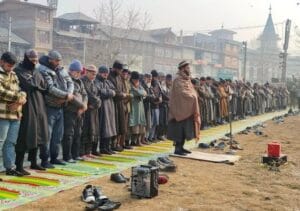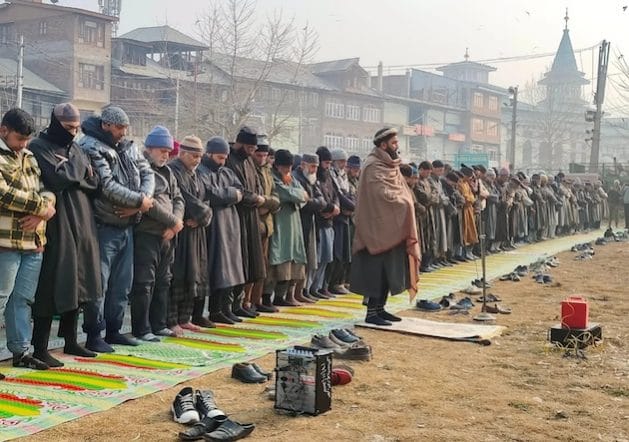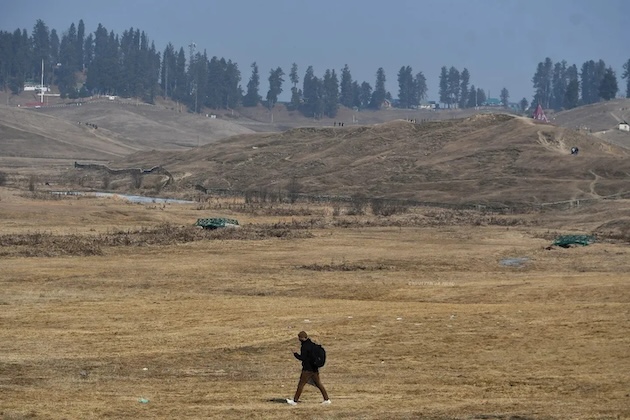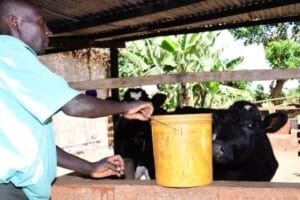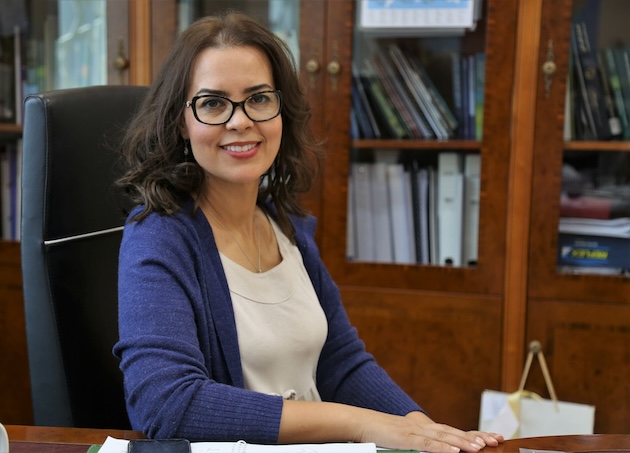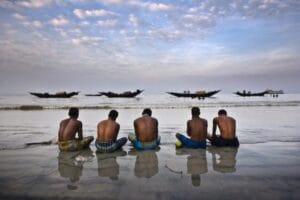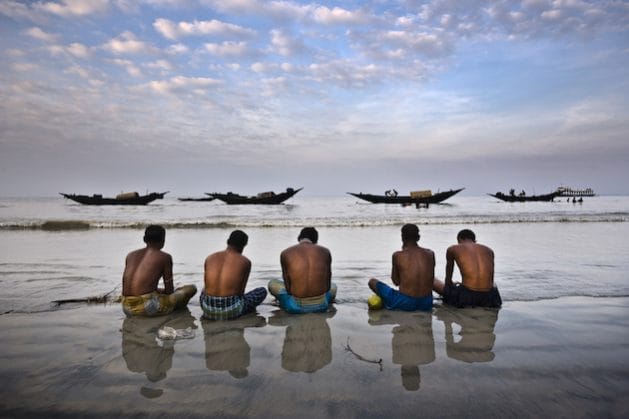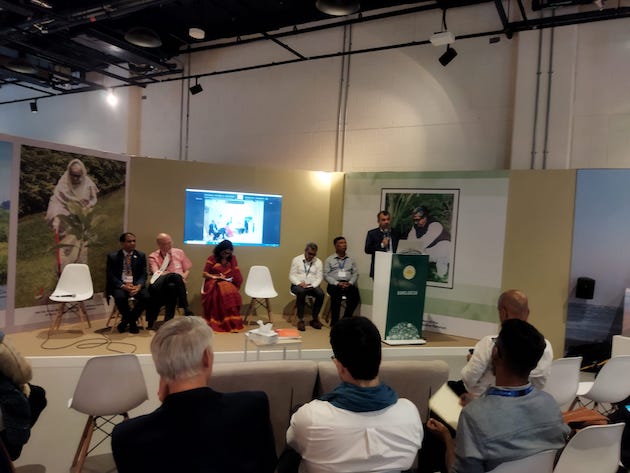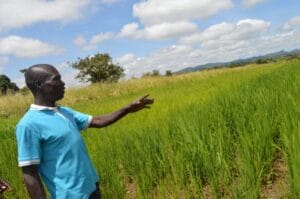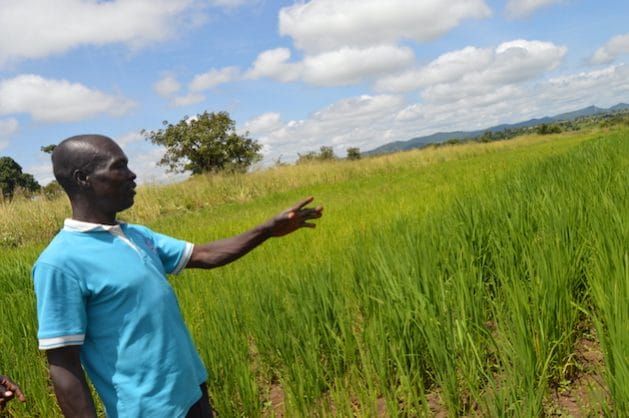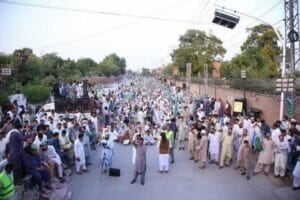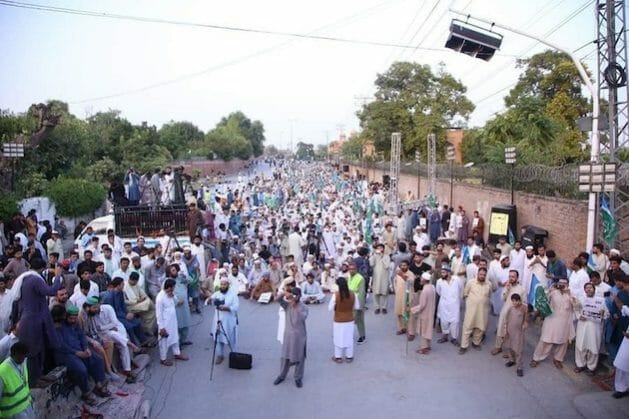
Africa, Africa Climate Wire, Armed Conflicts, Civil Society, Climate Change, Climate Change Justice, Development & Aid, Editors’ Choice, Environment, Featured, Food and Agriculture, Food Security and Nutrition, Headlines, Human Rights, Indigenous Rights, Sustainable Development Goals, TerraViva United Nations

In a quest for survival, farmers and pastoralists living in Oldonyo Sambu, Tanzania’s northern Maasai Steppe, used to fight over every drop of water. However, 12 villages have now adopted climate-smart bylaws after months of negotiations, putting an end to hostilities.

A pastoralist gazes into the horizon while taking a break from grazing cattle in Ikolongo Village. Credit: Kizito Makoye/IPS
– As the sun sets, its golden hues piece through the dusty haze, creating a dazzling display when a herd of livestock lazily roams on the arid landscape as they return home from grazing.
Dressed in shiny red robes, the youthful Maasai pastoralists routinely whistle as they steer cattle, goats and sheep to maintain a unified path.
The quest for survival has forced these herders in Oldonyo Sambu, Tanzania’s northern Maasai Steppe, jostling for dwindling water and pastures as they try to sustain their herds.
Surprisingly, 670 kilometres (416 miles) away in Ikolongo village, south of Tanzania, the plight of water consumers has improved, thanks to a community-led initiative that brought farmers and pastoralists together to resolve their water woes.
Sitting under a baobab tree, 47-year-old Leinot Leboo watches his cattle drink from a pond. This tranquil moment contrasts sharply with the situation in Oldonyo Sambu, where farmers often clash with herders as they jostle for water.
“I don’t recall any fight between pastoralists and farmers here.We get enough pastures and water for our livestock,” says Leboo.
Unlike in Oldonyo Sambu, local villagers here have created specific grazing lands and water points for livestock to prevent clashes with farmers. “We often bring our cattle here and let them graze and drink without causing any disturbances,” says Leboo.
According to Ignas Mashaka, Ikolongo village chairman, the residents have created a system where pastoralists pay a small fee to feed their herds on rice husks produced by farmers, especially in the dry season.
“This arrangement provides a steady source of feed, but it also give farmers extra income,” says Mashaka

Cows drink from a pond used exclusively by pastoralists in Ikolongo village, Tanzania. Credit: Kizito Makoye/IPS
Strict Rules
After months of negotiation between local residents and local district authorities, the villagers enacted strict by-laws, which have now been adopted and ratified by 12 surrounding villages.
“These rules have helped to ease tensions over water use,” says Mashaka.
Under the initiative, local residents joined forces to construct dams and reservoirs which have reduced water scarcity, providing a reliable supply for farmers and pastoralists.
“We used to fight over every drop of water,” says Musa Chacha, a farmer at Ikolongo village. “But now, there’s enough for everyone and there’s no reason to fight,”
By working together and managing resources sustainably, Ikolongo villagers have built a strong and resilient community.

Female farmers in Ikolongo village learn horticulture to grow vegetables as part of their strategy to cope with drought. Credit: Kizito Makoye/IPS
The Bigger Picture
Despite having vast grazing lands, the east African country faces frequent conflicts over water and other resources due to climate change and weak land governance. Prolonged droughts often lead to clashes between farmers and pastoralists as they jostle for water and grazing space.
Tanzania’s livestock sector, a vital source of livelihood for millions, holds potential for growth in production and trade. With a cattle population of 36.6 million, the country ranks second in Africa, after Ethiopia. This accounts for 1.4% of the global cattle population and 11% of Africa’s. Beyond cattle, Tanzania also boasts large numbers of sheep, goats, chickens, and pigs, placing it among the continent’s top ten in overall livestock numbers.
However, the sector is plagued by many challenges due to climate risks and low investment, World Bank analysts say.
Transformative Initiative
As part of its broader efforts to improve the livestock sector, Tanzania has launched a new USD 546 million initiative to bolster productivity, increase resilience to climate change and improve the livestock industry. The initiative entails innovative strategies to curb extreme weather by constructing water reservoirs, introducing drought-resistant forage crops, and improving livestock breeds.
Challenges and Solutions
According to a recent World Bank report, “Harnessing the Opportunity for a Climate-Smart and Competitive Livestock Sector in Tanzania,” the pasture-based livestock sector in Tanzania faces serious challenges due to climate change and endemic livestock diseases, impacting animal health, productivity, and market access.

A herd of cattle grazes in a designated pastoralist area in Ikolongo village. Credit: Kizito Makoye/IPS
Pastoralist’s Perspective
Saidi Juma, a 55-year-old pastoralist from Kilolo village, has witnessed changes in weather patterns over the years. “When I was young, the rains were predictable, and the grass was plenty,” he says. “But in recent years, we have struggled to find pasture for our animals, and the rivers dry up too soon.”
One aspect of the scheme is adopting climate-smart innovations, such as better animal husbandry practices, drought-resistant fodder, and efficient water management systems.
The introduction of drought-resilient Brachiaria grass at Ikolongo village has maintained better livestock health during dry spells. “We planted these grass because they are resilient to drought and provide enough food for our livestock,” says Mashaka.
According to him, drought-resistant forage crops has ensured a steady supply of nutritious feed for livestock in dry seasons.
Expert Insights
In an interview with IPS, Malongo Mlozi, Professor of Agricultural studies and extension at Sokoine University of Agriculture, hailed the government initiative to revamp the ailing livestock sector by improving water management techniques.
“Water is life; by ensuring a reliable water supply, we can significantly improve the resilience of our livestock farmers against climate change,” he says
According to Mlozi, pastoralists must be trained to acquire the necessary skills and knowledge to cope with the vagaries of the weather.
“When pastoralists understand the benefits of climate-smart practices, they are more likely to adopt them and see positive results,”
Mlozi says the government scheme is likely to improve food security.
“By increasing the productivity of our livestock sector, we can ensure a stable supply of meat, milk, and other livestock products,” says Mlozi

Leinot Leboo grazes his cattle in a bushy enclave in Ikolongo village. Credit: Kizito Makoye/IPS
“This will help in addressing the nutritional needs of our population and reduce dependency on imports.”
Under the initiative, the government will construct water harvesting structures and introduce solar-powered boreholes to provide an eco-friendly solution.
“Access to water has always been a problem for farmers and pastoralists.The solar-powered boreholes will provide enough water.”
The scheme is also aiming to improve market access for livestock products by improving value chains so pastoralists can fetch better prices in livestock markets closer to their communities.
Tanzania’s livestock sector is changing with climate-smart practices and community-led efforts, setting an example for other regions. By focusing on sustainability and innovation, Tanzania is improving the lives of pastoralists and promoting peace and cooperation.
“We have come a long way from those tough times. Now, we look forward to a future where our children can grow up without the fear of conflict and scarcity.”
This feature is published with the support of Open Society Foundations.
IPS UN Bureau Report

